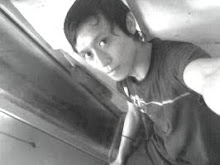Now that you have installed all the necessary hardware there are still few more things you need to do before switching on your PC for the first time. Your ATX case has a power switch which turns the PC on, a reset switch for resetting the system, a power LED which comes on when the PC is switched on and a hard drive LED which flashes when data is being written or read from your hard drive. You also have an internal speaker.
Figure 1 - Power and Reset switch
The switches and LED's need to be connected to its corresponding connectors on the motherboard. Please refer to your motherboard manual to locate where the connectors are. Different motherboards place the connectors in different locations. The connectors for the switches and LED's are normally grouped together. They should look similar to the image below.
Figure 2 - Switch and LED connectors
Every cable is normally labeled, they are normally named as follows, but could be slightly different on your system.
Power switch | Power / PWR-SW |
| Reset switch | Reset |
| Power LED | Power LED / PWR-LED |
| Hard drive LED | HDD-LED / IDE LED |
| Speaker | SPK / Speaker |
The connectors on the motherboard are also labeled but may be too small to see. Instead refer to your motherboard manual which would provide details on which pins you should connect the cables to. The image below shows how the pins may be organised on your motherboard.

Once you have connected all the cables to the correct pins on the motherboard, you are ready to switch the PC on. At this point you can close the cover of your ATX case but don't screw it on just yet as you might have possible problems that needs rectifying. Connect all the cables to back of ATX case. These includes the main power cable that connects to the power supply. PS/2 mouse and keyboard that connects to the PS/2 ports. Monitor cable that connects to the graphics card port, etc. Finally the moment has arrived. Switch on your monitor first. Your ATX power supply might have a main power switch at the back so make sure that is switched on. Now switch the PC on by pressing the power switch on the front of the ATX case. If you have performed all the tasks without any mistakes and providing that none of the main components are faulty, the PC should boot. When the PC boots you should see the name of the BIOS manufacturer, such as AWARD BIOS displayed on your monitor. Your CPU type, speed and the amount of memory should be displayed as shown on image below.

If your motherboard has a plug and play BIOS and is set to automatic device detection by default, then you would see your IDE devices being detected followed by a prompt complaining about missing operating system. If your motherboard does not detect the hardware, then you need to proceed to the BIOS setup screen by pressing DEL or F1 or F2 depending on your motherboard. Congratulations you have completed building your own PC. You now need to proceed to the software section which explains how to setup the BIOS, Hard disk and install an operating system.
If things did not go smoothly and your PC does not switch on then go to the troubleshooting section for possible solutions.









Komentar :
Posting Komentar